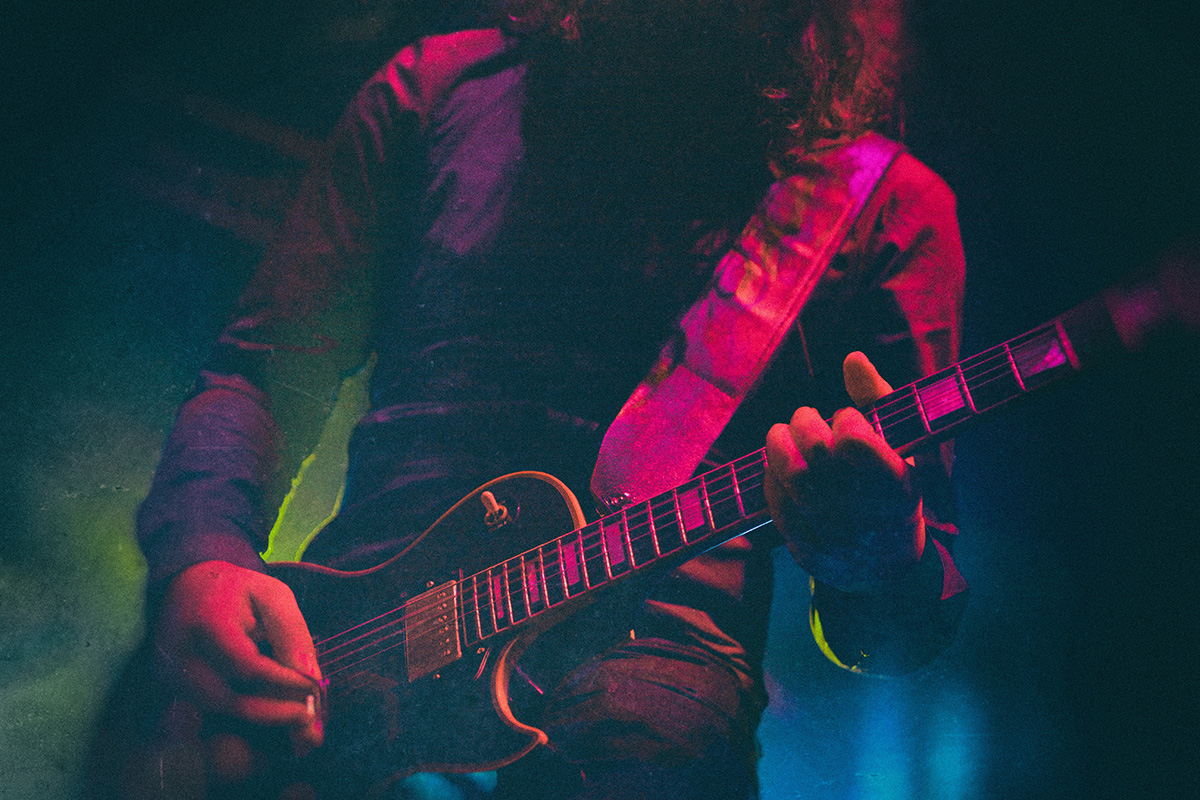Look beyond your standard major and minor scales. Modes are extremely powerful tools that are often looked over many musicians and songwriters. In fact, many don’t even know what they are. Or they seem intimidated because it sounds like a complex series of codes that only the top music theorists can decipher. In reality, modes are extremely easy to understand and can be used to invoke different emotions and feelings. Modes add a fresh, intriguing, and attention-grabbing to your basic scales, adding a sound that is entirely new. Find the source of millions of beautiful melodies and the source of inspiration for many of your favorite songs.
What are modes?
The word “mode” comes from the Latin word for “manner or method.” That being said, all musical modes originated in ancient Greece, so they have Greek names. All of the modes were named after different regions to represent the people who lived there. Modes, in general, are alternative scales.
For every key signature, there are seven modes.
- Ionian
- Dorian
- Phrygian
- Lydian
- Mixolydian
- Aeolian
- Locrian
Using the major scale as a starting point, each mode is derived by starting on a different pitch. For example, the Dorian mode starts on the second pitch of a major scale (In a C major scale, Dorian would start on D and go D E F G A B C D). In essence, modes take the Tonic (first note of the scale) something other than the first note.
Ionian, Lydian, and Mixolydian are major modes because they have a major 3rd. Dorian, Phrygian, Aeolian, and Locrian are minor modes because they have a minor 3rd.
Each mode has a characteristic pitch that makes it unique and useful in different ways. Going through one note at a time, we can see how each is different and how they are used in real music.
The Ionian Mode
Ionian is the name for the common Major scale. In other words, it is the simple “Do Re Mi” scale.

Ionian is made of seven notes with a succession of whole and half tone steps, called diatonic. For example, in the key of C the Ionian scale consists of the notes c-d-e-f-g-a-b-c. The half steps of this mode are located between the 3rd & 4th and 7th & 8th scale degrees. The characteristic pitch of Ionian is the natural 4 (In the C major scale, the F is natural). This mode is bright and happy sounding and well-liked for pop, rock, classical, jazz, punk, and country music.
Ionian Mode Examples
- “Flute and Harp Concerto in C major” by Mozart
- “Mandolin Concerto in C Major” by Vivaldi
- “Ode to Joy” by Beethoven
- “Let It Be” by The Beatles
- Really like 90% of pop music uses a major scale.
The Dorian Mode
Dorian is a minor mode that starts on the second note of the major scale.

In major scales the 6th is minor, however, in Dorian, it is major. In fact, the natural 6th is the only difference between a modern minor scale and Dorian. It’s prominent in blues, rock, jazz, and funk. It is also prominent in a lot of Irish music. The natural 6th gives a warmer and brighter sound than the usual minor scale.
Dorian Mode Examples
- “Billie Jean” by Michael Jackson
- “Smoke on the Water” by Deep Purple
- “So What” by Miles Davis
- “Get Lucky” by Daft Punk
- “Radioactive” by Imagine Dragons
- “Another Brick In The Wall” by Pink Floyd
The Phrygian Mode
Phrygian is a minor mode and is on the third note of the major scale.

It is also similar to the minor scale, but the second note is minor, not major. This gives a darker and tenser sound to the typical minor scale. Phrygian is also called the Spanish Gypsy scale because it resembles the scales in flamenco music. This sound is much loved in heavy metal, jazz and flamenco music.
Phrygian Mode Examples
- “Wherever I May Roam” by Metallica
- “Olé” by John Coltrane.
- “Pyramid Song” by Radiohead
- “Hungarian Rhapsody No. 2” by Liszt
- “Fantasia on a Theme of Thomas Tallis” by Vaughan Williams
- “Surfer Girl” by The Beach Boys
The Lydian Mode
Lydian is a major mode that starts on the 4th note of the major scale.

Lydian is useful if you want to write in a major key, but want a slightly different sound. The characteristic pitch of this scale is the sharp 4th. The tritone created by the root and raised 4th creates a very bright and forward moving sound. Besides the raised 4, Lydian is very close to the major scale. So close, in fact, that it leans towards the 5th and needs extra care to make sure it is not in the related major key. For example, if you are writing in F Lydian, be careful that it doesn’t just sound like C major. It is used in jazz and appears seldom in other genres.
Lydian Mode Examples
- “Oceans” by Pearl Jam
- “Flying Theme” from E.T by John Williams.
- “Flying in a Blue Dream” by Joe Satriani
- “Overture 1928” by Dream Theatre
- “The Riddle” by Steve Vai
- “Mazurka No. 15” by Chopin
Also look out for Lydian on your favorite TV shows. The Jetsons Theme Song uses Lydian to create a futuristic sound. The Simpsons theme song also uses Lydian, but to create a more quirky sound.
The Mixolydian Mode
Mixolydian is a major mode that starts on the 5th note of the scale.

A characteristic of this mode is the flat 7. This gives a smooth and bluesy sound to the scale. It is this 7th that differentiates the scale from a major scale. Mixolydian is popular in blues, rock, jazz, and funk because of the bluesy sound it creates.
Mixolydian Mode Examples
- “Sweet Child o’ Mine” by Guns N’ Roses
- “Norwegian Wood” from The Beatles
- “The Sunken Cathedral” by Debussy
- “Sweet Home Alabama” by Lynyrd Skynyrd
- “Clocks” by Coldplay
- The Theme of the TV series Star Trek
The Aeolian Mode
Aeolian is a minor mode that starts on the 5th note of the scale.

The characteristic pitch of Aeolian is the flat 6. You may confuse Aeolian with the natural minor scale, but the 6th and 7th degrees are never raised for the sake of harmonic progression. For example, in A minor, you will still find an E major chord with a G#. Not in Aeolian, that E chord is an Em, keeping the G natural). This creates a sad and oppressive sound. Aeolian is used in rock music as an extension of the common minor pentatonic scale.
Aeolian Mode Examples
- “All Along The Watchtower” by Jimi Hendrix
- “Losing My Religion” by REM
- “I Kissed A Girl” by Katy Perri
- “You Give Love A Bad Name” by Bon Jovi
- “Paranoid” by Black Sabbath
- “Ma mère l’Oye” Movement I by Ravel
The Locrian Mode
Locrian is a minor mode that starts on the 7th note of the scale.

Locrian features a flat 5th, which gives it the darkest sound of the minor scales. This also makes it the least common of the modes because the jarring and unusual pitch. A lot of western music relys on the relationship between the 5th and 1st scale degree. If the 5th is lowered, the structure breaks down.
Locrian Mode Examples
- “Three Fantastic Dances” by Shostakovich
- “Ride The Lightning” by Metallica
- “Prelude in B minor, op. 32, no. 10” by Rachmaninov
- “Symphony no. 4 in A minor” by Sibelius
- “Dust to Dust” by John Kirkpatrick
- “Army of Me” by Björk
Learn more about modes and songwriting! At Performing Arts we have an unconditional commitment to developing the talents, gifts, and abilities to everyone that participates. It is through the arts that we share the highest achievements of every culture and find a universal language which allows communication among all people. As such, the arts are an all-inclusive essential component of a complete education.


